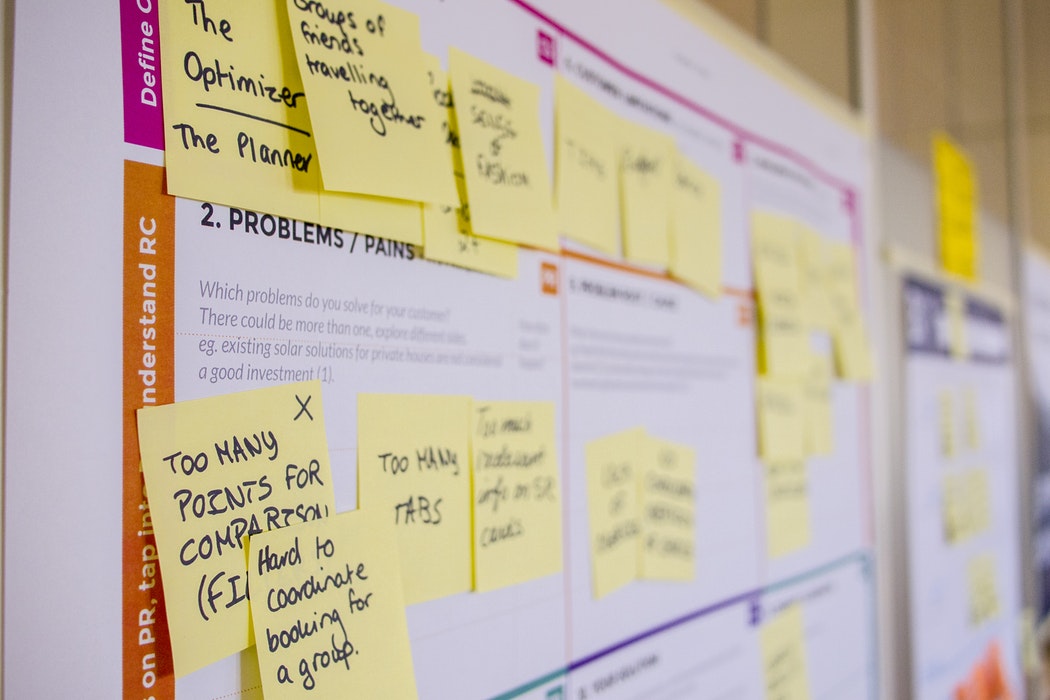What’s the Secret to Building Strong Customer Journeys in 2018?

Though 2018 is only a month old, marketers should have a good idea of what the dominant themes of the year are and be planning for them accordingly.
Now more than ever, evolving the ways in which brands build more personal, longer-lasting relationships with customers is a priority for marketers. We always hammer home the need to map out strong customer journeys because we firmly believe in their effectiveness, but the question is now beginning to shift to “how do we refine our processes to make our journeys faster and more efficient?”
The answer, however, is already well within our grasps.
But first, some context. Let’s look back on the biggest customer journey trends of 2017…
Without question, 2017 was the year of the data analyst. Everywhere you went, all anyone in marketing circles — business owners, pundits, thought leaders, etc. — could talk about was data, artificial intelligence and predictive analytics as the most innovative methods to build the best customer journey possible.
That’s not to suggest those three things won’t be important going forward, but they’ve become the rule rather than the exception. Getting to know customers on a personal level and being able to predict their behaviours should be second nature to companies now.
Omnichannel practices also hit peak levels in 2017 after a slow buildup in previous years. Companies are coming around to the fact that their communication channels should exist under the same umbrella and that their marketing strategies should be cohesive, rather than living in individual silos.
Meanwhile, new devices are beginning to enter the fray as starting points for customer journeys. For example, voice-activated speakers are becoming increasingly popular as a direct channel for relevant information, even though they didn’t register on most people’s radars until 2017.
Seamlessly incorporating new channels into your methodology, however, isn’t always the easiest thing to pull off. Being truly multichannel is already part of the equation, but there’s an extra step to ensure that integrating things like Google Home, Alexa and others into your customer journey is a snap.
What will emerge as the most important development of 2018?
Most marketers are receptive to the idea that putting customer experience above all else will drive results and keep people coming back for more — but buying into a theory and putting it into practice are two different things.
How brands execute strategies that intrinsically link the customer journey to the success of its omnichannel approach will depend on one thing: having a multidisciplinary team. It’s ironic when you think about it — last year was all about data to automate and optimize, and this year we’re focused on humans.
Channels don’t work separately anymore, which means your teams can’t be siloed. If your company’s CMO is the only person keeping an eye on the collective success (or failure) of your channels, you’re going to lose cohesion, lose customers and lose relevance.
AI may have done wonders for automating your processes, but putting together a cohesive group of talented specialists will only serve to enhance the technological advancements you’ve already brought to your marketing machine.
Your core of specialists should be keeping themselves well-informed of their counterparts’ channels. It doesn’t have to be complicated — it could be as simple as opening a Slack channel for sharing insights on specific topics related to each person’s expertise, or having a team member lead a roundtable discussions on an emerging trend from their channel during a weekly or bi-weekly 5 à 7. Get creative and do what works with your team’s unique culture.
Any new team members you bring on board will have to be added strategically to ensure your current group can evolve in the right direction. As specialists, they should be able to contribute to the success of their own channel, but in a way that positively impacts the team’s collective effort to improve the customer journey. This is the key.
KPIs should now reflect your company’s omnichannel approach. No tweet, blog, email, SMS or push strategy should be drafted with only its own channel in mind. It isn’t good enough anymore for each channel to hit its own KPIs and call it a day. Content developed for any given channel should work towards reflecting the goals of all successful customer journeys: acquisition, onboarding, engagement and retention.
Ah, omnichannel strategy! Sounds doable, but how do I go about it?
Here’s BDG’s five-step approach:
-
 Structure your team: Your channels should all exist under the same umbrella. This group would oversee clients all the way from before they become clients, either until they become “fans” — clients who are so in love with your work, they’re willing to overlook any small stuff that others might sweat — or until they are about to be lost.
Structure your team: Your channels should all exist under the same umbrella. This group would oversee clients all the way from before they become clients, either until they become “fans” — clients who are so in love with your work, they’re willing to overlook any small stuff that others might sweat — or until they are about to be lost.
-
- Go out and get your talent: I know… it’s easier said than done, but you should be looking for specialists who can see the bigger picture and mesh seamlessly with your existing core. Any new marketers you bring in should be very data-driven at every stage.
-
- Map out the customer journey: Now that you have your team, work together to determine touchpoints for each phase of the journey: acquisition, engagement, onboarding and retention. Then, identify which specific channels are implicated at each stage, assess the current state of the journey and project its future state. You might already be advanced in your journey mapping, in which case, as you onboard new specialists, get them to offer their ideas to iterate, improve and optimize.
-
- Set the KPIs: Each part of your journey will have a goal, which will be translated into KPIs based on certain elements, regardless of channel. As a rough guide, open rate, likes and clicks don’t qualify as omnichannel KPIs — instead, churn rate, Net Promoter Score and customer lifetime value are metrics you should track.
- Execute omnichannel strategies: This is where technology and agile management play an important role. With a few good tools in place, you’ll be set to be able to manage all your campaigns and channels at once. Your effectiveness in this step will go a long way in determining how fast and agile you can be with your planned strategies.
Brands that can excel at this approach will also excel in the race to stay relevant within a crowded landscape.
This will be the year of determining how we master the current channels we know, having a comprehensive customer journey with the key touchpoints to drive engagement and retention, and figuring out if you’re agile enough to add more channels into your ecosystem.
Want to chat with Caren about building a strong customer journey? Reach out to her at caren@bdg-dev.hesper.io.


